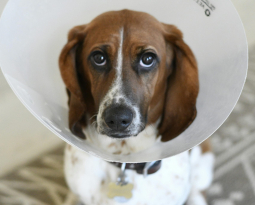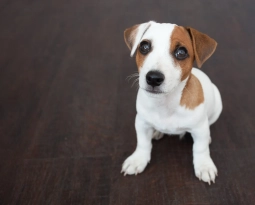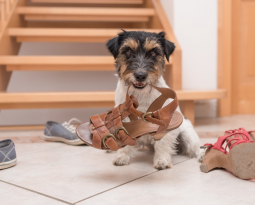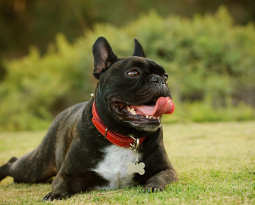That’s that time of year again — the summer in Arizona. Here in Tucson, it gets pretty hot. If it’s hot for you, then that means it’s even hotter for your dogs! If you’re worried about the heat affecting your pup, here are signs of dehydration in dogs you should keep an eye out for.
Dehydration in dogs occurs when the body loses more fluid than it’s taking in. That means your dog’s body won’t be able to compensate for the loss of water, which impacts their health almost immediately! It lowers the amount of oxygen their organs and tissues get and decreases the amount of electrolytes in their system too. These electrolytes, such as sodium, chloride, and potassium, do the following:
- Balanced your dog’s pH
- Moves nutrients into cells
- Facilitates muscle function
- Regulates nerve function
In the most serious cases of canine dehydration, the severe shortage of fluids can even lead to organ failure and death.
Causes of Dehydration in Dogs
Other than the obvious case — a lack of water — dehydration can occur due to many reasons.
Just like with humans, sudden bouts of vomiting, diarrhea, and heat stroke can lead to dehydration as your body is rapidly expelling fluids.
Over-exercising can also cause excessive panting and dehydration.
Is My Dog Prone to Dehydration?
Puppies, senior dogs, nursing mothers, and toy dog breeds also have an increased risk of dehydration. Sometimes dehydration in dogs is a symptom of an underlying cause, including these diseases or conditions: kidney disease, diabetes, or some types of cancer.
Symptoms of Canine Dehydration
So, how can you tell if your dog is dehydrated? There are a few telltale signs that you can look out for and check.
- Loss of skin elasticity
- Loss of appetite
- Vomiting with or without diarrhea
- Reduced energy levels and lethargy
- Panting
- Sunken, dry-looking eyes
- Dry nose
- Dry, sticky gums
- Thick saliva
Loss of skin elasticity is the easiest thing you can check for signs of dehydration in dogs. All you need to do is gently grab the skin just above their shoulder blades, pull up on it, and let it go. If your dog has enough fluids in their system, the skin will immediately go back to the right position. If your dog is dehydrated, it will take a longer time to fall back into place.
How to Treat Dehydration in Dogs
If you suspect your dog is dehydrated, try to entice them to drink fresh and cool water, especially if they’ve been outside in the hot weather. You can encourage them to drink more by ensuring their bowl is clean and filled with fresh water, place their water bowl near their favorite area like their bed, food bowl, or toy chest,and reward them when they do drink. If you need to entice them to drink more, you can try adding some chicken broth or bone broth to their water bowl.
You also may need to replace their electrolytes. If they’re not vomiting, you can give them an electrolyte-enhanced fluid like Pedialyte.
In most causes, dehydration is easy to catch and is not severe. However if you notice your dog is acting weird and you don’t know why, call us at Acoma Animal Clinic in Tucson. We’re experts at helping dehydrated dogs get back on their feet.
How to Prevent Dehydration in Dogs
The best way to protect your dog from dehydration is to make sure they’re not put in a situation where they can be dehydrated! As a general rule, dogs require at least one ounce of water per day for each pound of body weight. So a 20 pounds dog needs to drink 20 ounces of water per day.
Provide them with fresh and clean water every day and wash their bowl regularly. After all, you wouldn’t want to drink from a dirty glass, would you?
When you take them outside, always bring water for them along too. You never know when they’ll need it. This is especially true to Arizona summers! If you live in an area that gets excessively hot, always let your dog take breaks in the shade and bring extra fluids for them, even if it’s a short walk.
Heat exhaustion is common in dogs! It can happen in your own yard, or on a walk. Since dogs can’t sweat, they rely on panting to cool themselves off. But that sometimes isn’t enough! Make sure they have plenty of cool water to help refresh them and shade to rest in.
If you have any questions on how to avoid dehydration, give us a call!







